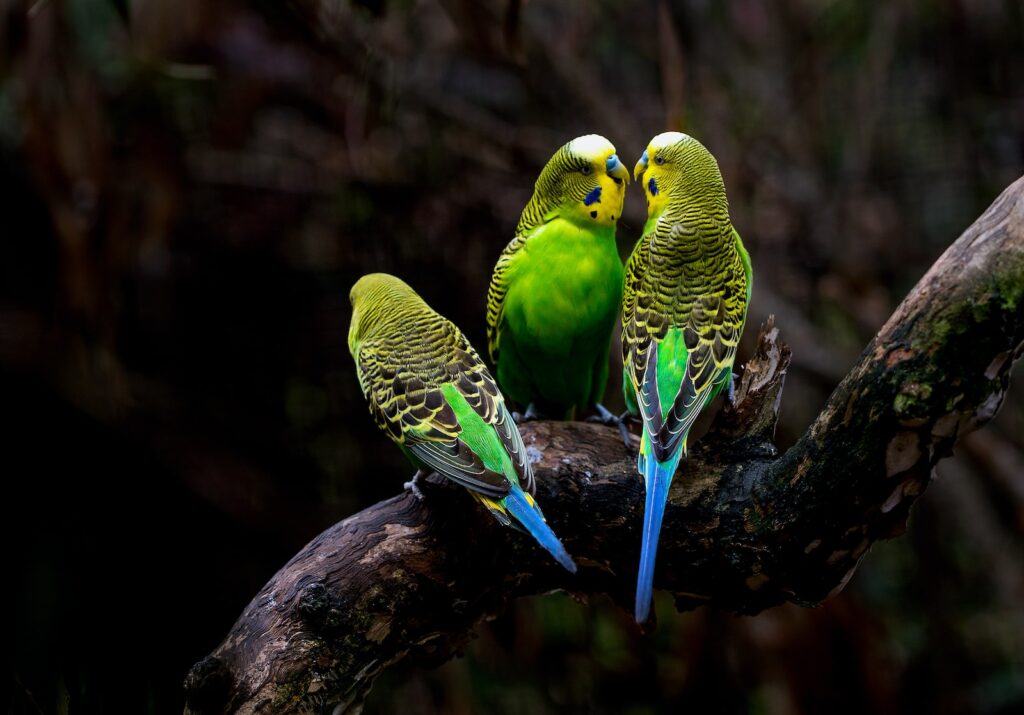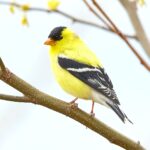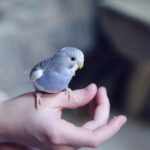If you’re a bird enthusiast, the term “budgie” likely evokes images of a small, chirpy parakeet. These birds are as endearing as they are colorful, providing a unique blend of companionship for bird lovers everywhere. So, how does one create a deep connection with these delightful creatures? It’s time to delve deep into understanding budgies and unearth secrets to successful bonding.
Understanding Budgie Behavior
The Social Birds
The vibrant budgies, hailing from Australia’s wild outbacks, are social creatures to their core. In the wild, they’re often seen in large, bustling flocks, and their gregarious nature continues even in domestic settings. They not only engage actively with fellow budgies but also share deep bonds with humans who care for them. This camaraderie is so potent that a lonely budgie can feel despondent. Hence, fostering an environment where they can socialize is essential.
Budgie Body Language
Learning to read a budgie’s body language can be akin to mastering a new language. But instead of words, you’re decoding fluffed up feathers, head tilts, or tail flicks. When a budgie is relaxed, it might grind its beak, signaling contentment. A bobbing head might indicate curiosity, while tail wagging often shows excitement. Recognizing these subtle cues is the cornerstone of bonding, allowing you to understand and cater to their needs and emotions better.
Fearful Signs
While it’s heartening to see a budgie thrive, it’s equally vital to discern when they’re stressed or scared. Feather plucking, continuous pacing, or excessive screeching are indicators of discomfort. Additionally, a fluffed-up appearance combined with lethargy can signal illness. Recognizing these signs early can make all the difference in ensuring the well-being of your little feathered friend.
Moods and Melodies
Budgies are vocal, and their chirrups, tweets, and melodies often have stories to tell. A content budgie might sing joyfully, while rapid chirps could indicate excitement or alertness. On the flip side, a series of sharp, loud calls might signal distress. Over time, you’ll become a connoisseur of your budgie’s symphony, understanding its nuances and responding to its many melodies.
Creating a Comfortable Environment
Safe and Spacious Cages
The adage ‘a bird in a gilded cage’ holds a grain of truth. Budgies need more than just beauty; they require functionality. A cage should be spacious enough for them to stretch their wings, fly short distances, and play. Horizontal bars can be great for climbing. Moreover, ensure the cage is free from hazards like sharp edges and is regularly cleaned to keep infections at bay.
Enriching Toys
Just as humans need mental stimulation, so do budgies. A combination of ladders, bells, mirrors, and chew toys can keep them entertained. However, always be wary of toys with small, detachable parts or those made of toxic materials. Regularly inspect toys for wear and tear and replace them when needed.
Regular Routine
Consistency is key in a budgie’s world. These birds thrive on routine. Setting regular times for feeding, interaction, and rest helps them feel secure and reduces stress. While they’re adaptable, drastic changes in their daily schedule can be unsettling.
Natural Light Cycle
Mimicking the natural rhythm of the sun is essential for a budgie’s health and mood. They need adequate exposure to sunlight during the day, followed by darkness to ensure sound sleep at night. If they’re kept in artificially lit conditions for prolonged periods, it can lead to health and behavioral issues.
Feeding and Treats
Quality Seed Mix
While many consider seeds to be a staple of a budgie’s diet, it’s crucial to offer a varied and balanced mix. Quality seed mixes often comprise of millets, canary seeds, and oats. Sprouted seeds are a nutritious addition too, and the occasional millet spray can be an irresistible treat for these little avians.
Fruits and Veggies
Supplementing a seed diet with fresh fruits and veggies introduces essential vitamins and minerals. Offer slices of apples, pears, or introduce leafy greens like spinach. However, it’s paramount to be aware of foods that are toxic to budgies. Avocado, chocolate, and certain seeds like apple seeds should be strictly avoided to prevent poisoning.
Water is Essential
Hydration is the cornerstone of health, and budgies are no exception. Fresh, clean water should be available to them at all times. Their water dishes should be cleaned daily to prevent the buildup of harmful bacteria. In the wild, budgies often drink dew from leaves; replicating this with occasional fresh greens can also be a hydrating treat.
Limit Treats
While we all love spoiling our pets, moderation is key when it comes to budgies. Sugary, salty, or fatty treats might harm their health in the long run. It’s always better to offer wholesome, natural treats like fresh fruit or millet rather than processed bird snacks.
Gentle Handling Techniques
Slow and Steady
Remember, to a tiny budgie, humans can appear as gentle giants. Quick or abrupt movements can be intimidating and stress-inducing. When approaching your budgie, move slowly and predictably. Over time, this will foster trust and make your interactions more rewarding.
Speak Softly
Your voice can be a potent tool in bonding. Soft, soothing tones can calm a nervous budgie, while high-pitched or loud sounds might agitate them. Regularly talking to your budgie, even narrating your day, can be a comforting routine for them.
Hand Training
Training a budgie to perch on your finger is a step towards intimate bonding. Start by offering treats through the cage bars, gradually moving to an open hand inside the cage. Over time, with patience and consistent positive reinforcement, your budgie will associate your hand with safety and treats.
Respect Their Space
Every individual, feathered or not, needs personal space. If a budgie retreats or shows signs of wanting to be alone, it’s vital to respect that. Forcing interactions can strain the bond and induce stress. Let them set the pace, and you’ll find your relationship deepening organically.
Health and Grooming
Regular Check-ups
Just as humans need periodic health check-ups, so do budgies. A qualified avian veterinarian can assess your budgie’s health, offer vaccinations, and provide guidance on diet and care. Preventive visits can catch potential health issues before they become severe, ensuring a longer, healthier life for your pet.
Nail Trimming
Overgrown nails can be more than just an aesthetic concern for budgies. They can interfere with their perching and mobility. While there are specially designed bird nail trimmers available in the market, if you’re unsure about the process, it’s best to consult with your vet. They can demonstrate the correct technique, ensuring you don’t hurt your budgie or clip the nails too short.
Bathing Options
Just as with humans, regular bathing keeps budgies clean, refreshed, and helps in maintaining healthy skin and feathers. While some budgies adore a fine mist spray, others might prefer splashing in a shallow dish. It’s essential to experiment and find out your budgie’s preference. However, ensure the water is lukewarm and free from any chemicals or detergents. Also, avoid wetting them during cold weather or late in the day, so they have ample time to dry before nightfall.
Beak Care
The beak is an integral part of a budgie’s anatomy, used for eating, playing, and exploring. Over time, a budgie’s beak can become overgrown or misshapen. Providing cuttlebones or mineral blocks in the cage can help in natural beak maintenance, as they offer a surface for budgies to gnaw on, keeping their beaks in top shape. If you notice excessive growth or any deformity, seek advice from an avian veterinarian.
Enjoying Playtime Together
Interactive Toys
Stimulation is crucial for a budgie’s mental health. Engaging in play together can enhance your bond significantly. Opt for toys that you both can interact with. Mirrors can intrigue budgies, as they often view their reflection as another bird. Bells jingle with a touch, and puzzle toys can challenge their intellect. Rotate toys periodically to keep their environment fresh and stimulating.
Outside Cage Time
Freedom to stretch their wings and explore outside the cage can be invigorating for budgies. Ensure the room is safe – windows and mirrors should be covered, and fans turned off. Also, be mindful of other pets. Cats and dogs might pose a threat, so it’s essential to supervise these exploratory sessions closely.
Teaching Tricks
Budgies are intelligent creatures capable of learning various tricks, from simple commands like ‘step up’ to fetching small objects. Consistent training, paired with positive reinforcement like treats or praises, can yield results. Remember, every budgie’s pace of learning is different, so patience and encouragement are vital.
Singalong Sessions
Anyone who’s spent time around budgies knows they have a penchant for music. Playing soft tunes or singing along can be an entertaining session for both of you. Observe their reaction to different genres; you might be surprised to find your budgie has a favorite song! Just ensure the volume remains moderate to avoid overwhelming their sensitive ears.
‑PART 4-
Conclusion
Budgies, with their vibrant colors and vivacious personalities, have a unique way of worming themselves into our hearts. The bond between a budgie and its human can be deep, akin to the relationship we share with traditional pets like cats and dogs. By understanding their behaviors, catering to their needs, and investing time in interaction, this bond can be nurtured and strengthened. While the journey might be sprinkled with challenges, the joy of having a feathered friend who chirps by your side, learns tricks, and offers companionship is immeasurable. So, as you embark on this bonding adventure, remember to relish every moment, be patient, and enjoy the melodic journey ahead. And yes, we’ll conclude with one more pun – it’s ‘tweet’ to bond with a budgie!
FAQs
- Q: How long does it take to bond with a budgie?
- A: The bonding timeline is subjective and depends on various factors, including the budgie’s past experiences, its age, and your approach. While some budgies, especially the young ones, might get comfortable within a few weeks, others, particularly those with traumatic pasts, might need several months. Consistent gentle interactions and patience are paramount in this process.
- Q: Can budgies recognize their owners?
- A: Yes, they can! Budgies are endowed with a good memory and strong observational skills. Over time, they can recognize and differentiate their owners from other humans. They often show signs of affection or excitement when their favorite human is around.
- Q: Do budgies like to be petted?
- A: This is a budgie-specific preference. Some enjoy a gentle stroke on their head or neck, while others might be averse to touch. Always approach slowly and watch for signs of discomfort. If a budgie seems stressed or scared, it’s better to refrain from petting and try again later.
- Q: How can I tell if my budgie is happy?
- A: A content budgie often sings, chirps, and engages in playful activities. Other signs include a relaxed posture, smooth feathers, and an active demeanor. They might also show interest in their environment, exploring toys, or interacting with cage mates.
- Q: Is it okay to have just one budgie?
- A: While budgies are inherently social birds, they can thrive individually provided they receive ample attention and interaction from their human companions. If you’re considering keeping a single budgie, ensure you can dedicate time each day for engagement. However, many owners choose to keep a pair to offer constant companionship, especially if they have busy schedules.





